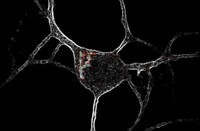Advertisement
Grab your lab coat. Let's get started
Welcome!
Welcome!
Create an account below to get 6 C&EN articles per month, receive newsletters and more - all free.
It seems this is your first time logging in online. Please enter the following information to continue.
As an ACS member you automatically get access to this site. All we need is few more details to create your reading experience.
Not you? Sign in with a different account.
Not you? Sign in with a different account.
ERROR 1
ERROR 1
ERROR 2
ERROR 2
ERROR 2
ERROR 2
ERROR 2
Password and Confirm password must match.
If you have an ACS member number, please enter it here so we can link this account to your membership. (optional)
ERROR 2
ACS values your privacy. By submitting your information, you are gaining access to C&EN and subscribing to our weekly newsletter. We use the information you provide to make your reading experience better, and we will never sell your data to third party members.
Neuroscience
Potential alcohol addiction mechanism revealed
Researchers are using knowledge gained from rat studies to develop better therapeutics
by Cici Zhang
June 21, 2018
| A version of this story appeared in
Volume 96, Issue 26
One in eight American adults abuse or are dependent on alcohol at some point in their lives, according to a 2017 study. Researchers would like to design better drugs to help this segment of the population overcome alcohol addiction, but progress has been stymied because their test subjects—animals—don’t reflect addiction as it affects humans.
Now, a team led by Markus Heilig and Eric Augier at Linköping University has developed a population of rats that displays alcoholic tendencies and, upon studying the animals’ brains, has identified a potential new drug target (Science 2018, DOI:10.1126/science.aao1157).
To establish their model rodents, the researchers conditioned a group of rats to drink alcohol. Then they offered the animals an alternative: a solution containing the artificial sweetener saccharin. A majority of the animals chose the latter, but about 15% continued drinking the alcohol. This proportion approximately matches the segment of humans who regularly drink who are affected by alcohol addiction. Moreover, the alcohol-preferring rats continued to press a lever to receive the alcohol even when it was paired with an electric shock to their paws. Such behavior mimics that of humans who compulsively abuse alcohol despite negative consequences, the team says.
When the researchers studied gene expression in the amygdala of these alcohol-preferring rats, they discovered that compared with normal rats, these animals produced 50% fewer GAT-3 transporter proteins. The amygdala is a brain region that’s been associated with alcohol addiction, while GAT-3 transports the neurotransmitter γ-aminobutyric acid (GABA) back inside neurons after release, cleaning it from nerve cell junctions.
To confirm that impaired GABA clearance is part of the molecular mechanism of the rats’ alcohol-addiction-like behavior, the researchers engineered normal rodents to express low levels of GAT-3 in their amygdala. These animals displayed preferences for alcohol.
Following on these results, the team examined the brains of deceased humans who had alcohol dependence and found GAT-3 downregulation in the amygdala. “With that,” Heilig says, “we feel very comfortable that this is not only causing the behavior, but this is also something that holds up between rats and humans.”
Heilig and coworkers are currently working with an undisclosed drug company to bring the discovery to clinical development. They tell C&EN that they have collected preliminary data on molecules that could inhibit GABA release, potentially curbing alcohol-seeking behavior.
Rainer Spanagel, a pharmacologist at the University of Heidelberg, says in an accompanying commentary that small molecules targeting GABA clearance are promising, and several of them are under clinical development (Science 2018, DOI:101126/science.aau0668).
Thomas Kash, a neuroscientist at the University of North Carolina School of Medicine, says the current study is “very compelling.” He adds that “this is exciting because it potentially opens the door to a new druggable target for treatment of alcohol abuse,” referring to GAT-3.
Advertisement
Heilig isn’t sure that specifically targeting GAT-3 is the best way to go to reduce GABA levels. In drug development, he points out, blocking something that’s genetically upregulated is easier than tackling a downregulated target like GAT-3. But he would not rule out that therapeutic avenue.
Kash thinks that for a unique downregulated target, chemists and pharmacologists can still modulate it successfully by identifying proteins that interact with it, such as kinases and phosphatases, and aiming therapeutics at those. He adds, “Color me an eternal optimist.”





Join the conversation
Contact the reporter
Submit a Letter to the Editor for publication
Engage with us on Twitter